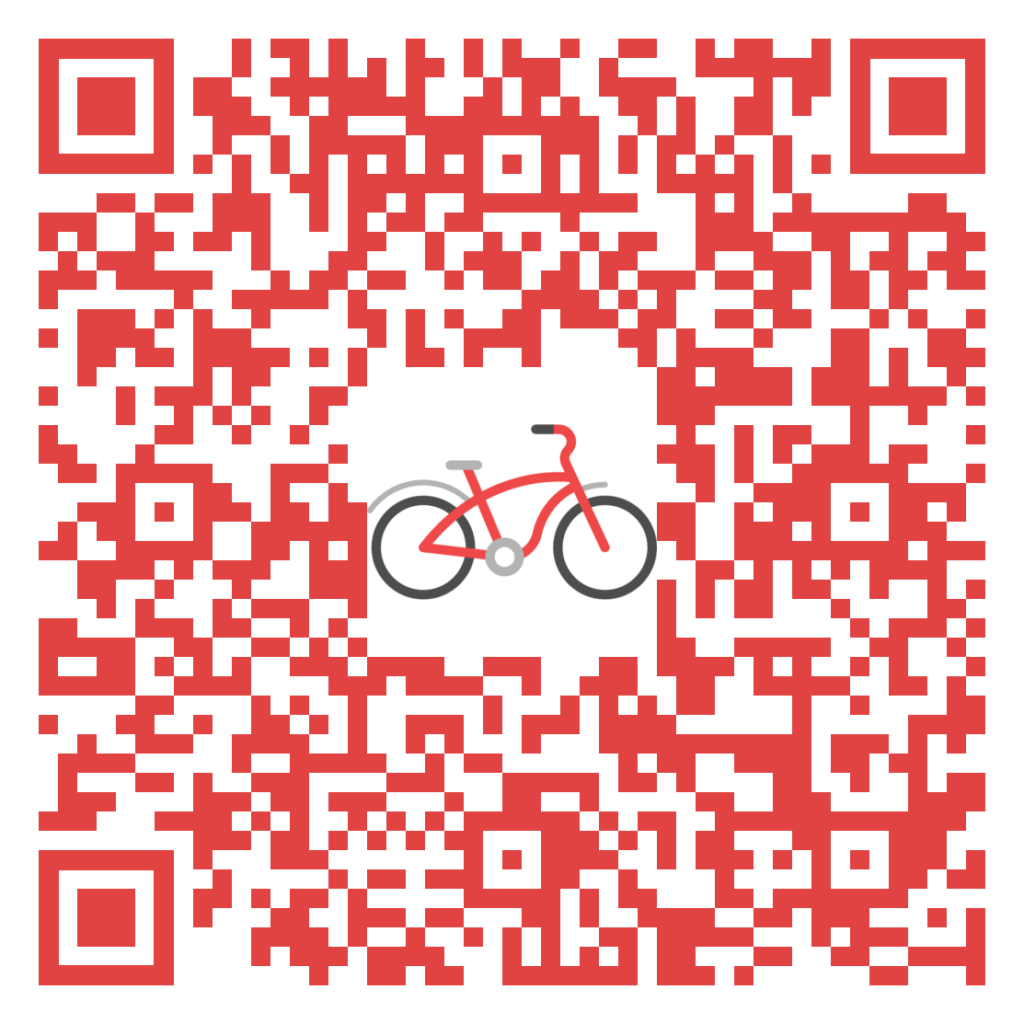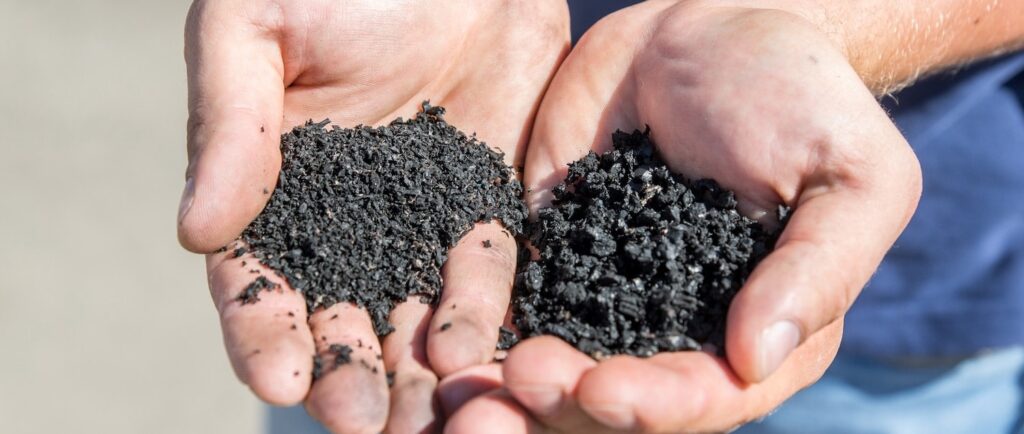
The title suggest that our bicycle rides around in circles. That is not quite what we want to do here. The purpose of this article is to illustrate that we can make the transition towards a circular economy, using Digital Product Passports. As we are a Dutch Tech company, we could not have picked any other example than our national means of transportation: the bicycle.

Scan the QR-code to the left to gain access to the C_passport® that will accompany us – and the bicycle – on this journey. Using a phone while riding a bike is a bad idea (and illegal), but since you are safely behind your computer or other devices, you can. As you read on, we will refer to the passport: let’s do this!
The circular economy starts at the drawing table. The old, linear way of doing things is focused on a take-make-waste model. In order to change that into circular practices, we have to make sure products are designed for disassembly. This means our bicycle has to be built up from components that can be replaced and fixed – which is only logical! This means we don’t have to dispose the entire bike once a single component breaks.
In C_passport®, you can record all seperate components, including their individual end-of-use instructions.


The materials we use have impact. Not just in terms of emissions, but also when it comes to material recovery, repairability and recyclability. To craft a sustainable bicycle, manufacturers must consider the origins and qualities of materials, opting for high-quality, recyclable resources. From the frame to the smallest components, each part should align with these principles. By doing so, we make it a whole lot easier to extend the use period of the bicycle and recover the materials after recycling and refurbishment processes.
Most bicycles are made using components from various brands. This makes sense, since the company that builds the best possible frame has become great at what they do by focusing on that one job. The same goes for the companies that created the wheels, the brakes and the gears. In the manufacturing phase, it all comes together in the end product: a bicycle.
To make sure the specific instructions and other relevant product information is available, the bicycle requires a product passport of all components. This will become even more logical in the other steps, but in this phase, it already adds value by creating a complete picture of the material composition and associated impact of the bicycle.

Once the bicycle is made, it embarks on a journey of its own: hopefully in a closed loop! Companies promote second-hand and refurbished bikes, reducing the environmental footprint and providing affordable options to consumers. For both selling companies and consumers, C_passport® provides a solid basis for making informed choices.
Besides material composition and impact data, the digital product passport captures important data to make sure the bicycle is as circular as it can be. This means: user instructions to make sure the use period of components can be extended. Additionally, if something does break – how can you get if fixed, or find the right spare parts?

If a bicycle is design to be refurbished and recycled, we do have to make sure those things actually happen. It helps if the end-of-use solutions are combined with reverse logistics. Information which can all be recorded in C_passport®. Want to know where to bring your used bike that you don’t want to end up in landfill? Scan the QR and find out. Materials are valuable, so let’s treat them like the commodity they are. All the while, we avoid emissions associated with the production of virgin material. Win-win!
Not every supply cycle is a closed loop. In this bicycle’s circular journey, we assume that not all materials are re-used in bicycles. Some components will be used to create all sorts of new products, like furniture, accessories, or any other new application of the material – through either refurbishment or recycling. If the materials are recovered and used again – in the same or other supply cycles – we are making a positive impact!

Many of the components in a bicycle can easily be refurbished, like the frame, or the spokes. For other parts, like the wheels, there are recycling solutions that make sure the material doesn’t have to be remade from virgin sources. If you record all these possibilities in C_passport® – ideally with dedicated refurbishment and recycling solutions organised – you can really make a difference and close the loop!
This brings us to the end of our journey – which strictly speaking, is not the end. The whole idea of the Circular Economy revolves around material recovery and the associated reduction of emissions. We can realise that through concepts like reuse, recycling, refurbishment and extending use periods. And the passport will be there for every journey!
Are you ready to become a pioneer and comply with legislation that will soon be in effect? Take circular steps as a company, and reach out to us. Together we can find ways to speed up the transition to a circular economy.